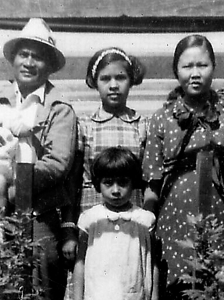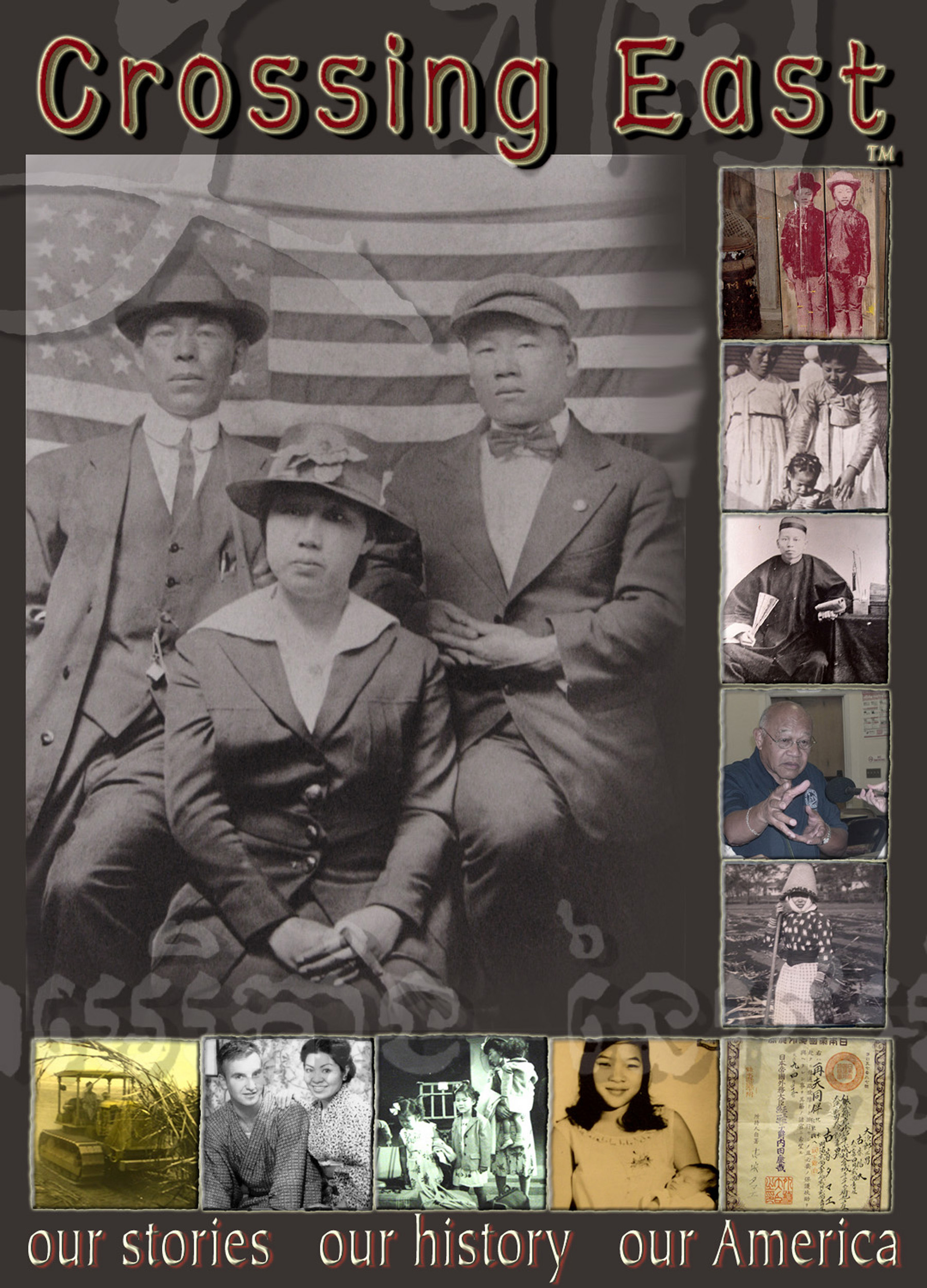Keep Asians Out – that has been the consistent message toward Asian immigrants beginning with the Exclusion Act of 1882. Crossing East gives detailed accounts of immigration laws designed specifically to restrict Asian Americans.
Listen: Crossing East Program 4 – Exclusion and Resistance
 Segment One: Angel Island
Segment One: Angel Island
From 1892 to 1924, 20 million immigrants were welcomed to America through Ellis Island of New York City. But on the other side of the country, at the Angel Island Immigration Station in San Francisco Bay, thousands of immigrants faced detention for weeks and months. From 1910-1940, during the time that the Angel Island Immigration Station was in operation, Asian immigrants were locked up in stark barracks and many endured lengthy interrogations by officials. This was not the welcome most had envisioned.
Acknowledgements:
Casey Lee, Erika Gee, Professor Judy Yung, Dale Ching. Thanks to the Angel Island Immigration Station Foundation.
Angel Island Archival Material
 Segment Two: Paper Sons
Segment Two: Paper Sons
During the dreaded immigration review process, Chinese immigrants were asked minute details about their family history and living conditions in China. Their answers had to agree with those of their sponsors and witnesses to prove their identities and right to enter the US. Since the Chinese Exclusion Act of 1882, every Chinese immigrant was interrogated in this way until 1943 when it was repealed. With poverty and political chaos in China, many Chinese looked to America for refuge. But with the Exclusion Act barring all but a few, Chinese immigrants had to find another way around the system. Children of parents who entered as paper sons still feel the sting of that interrogation process. Judy Yung is a professor emeritus of American Studies at the University of California, Santa Cruz. Her father entered as a paper son and her mother as a legitimate wife of a merchant.
Acknowledgements:
Professor Judy Yung and her family, especially for use of excerpts from her book, “Unbound Voices.” Actor Andres Alcala.
Produced by Sara Caswell Kolbet
 Segment Three: Defining American
Segment Three: Defining American
From 1907 to 1917 a few thousand men and a handful of women from the Punjab area in northern India made their way to North America. The Punjab was a rich agricultural region, but under British rule, many peasant farmers could not pay the high taxes. A famine from 1899 to 1903 decimated their cattle, and the farmers ended up losing their lands. There were Hindus and Muslims among those forced to seek their fortunes in America, but most were followers of the Sikh religion. South Asians arrived in a society that first welcomed cheap labor, then excluded each Asian immigrant group in turn. By the early 1920s, Punjabis fleeing discrimination, racism, and religious persecution were looking to settle. They sought somewhere safe, somewhere rural to worship and live in peace. That search played a key role in fighting a legal battle that would represent all Asians in America.
Acknowledgements:
Valarie Kaur and Judge Brar and their family, Professors Jaideep Singh and Bruce LaBrack, David Thind, and New Moon Productions for the use of clips from “Divided We Fall.”
Produced by Catherine Stifter and Sara Caswell Kolbet
Defining American Archival Material
 Segment Four: Seeds of Citizenship
Segment Four: Seeds of Citizenship
The Immigration Act of 1924 essentially cut off all immigration from Asia for 25 years. By the end of World War II there were only about 1500 Sikhs left in the United States. The 1924 act also affected Filipinos who had been working in the U.S. The U.S. annexed and took over the Philippines after the Spanish-American War in 1898. Filipino bachelors easily entered the U.S. throughout the 1920s and 30s. They filled the need for cheap labor; working on the sugar plantations in Hawaii, farms in California’s Central Valley and in hotels and restaurants of major cities. But when the depression hit, jobs were scarce. In 1934, Congress passed the Tydings McDuffie Act limiting Filipino immigration to just 50 people a year. Then in 1935 came the Repatriation Act. Filipinos who volunteered to leave the country were given one-way tickets back to the Philippines if they agreed never to return. It was tempting, but some did not take the ticket.
Acknowledgements:
Eudosia Juanitas, Max and Jean Lamar and Professor Dawn Mabalon.
Seeds of Citizenship Archival Material
 Segment Five: Cambodian Deportation
Segment Five: Cambodian Deportation
As the United States left Cambodia in 1975, Pol Pot and his deadly Khmer Rouge regime took control of the country and forced people to move into the countryside to work in what would be known as “The Killing Fields.” Those who tried to escape fled to the border of Thailand through mine fields to make their way to refugee camps. Between 1975 and 1985, more than 700-thousand South East Asians arrived in the US. 120-thousand were Cambodians. Andrew Thi was six years old when his parents and four sisters came to California. Though his family worked hard, Andrew still grew up in urban poverty. He wanted things he couldn’t afford and he got in trouble with the law for robbery and auto theft. And now because of a 1996 Immigration law, he faces deportation to a country he barely remembers.
Acknowledgements:
Andrew and Sing Thi, Professor Bill Hing, Porthira Chimm, and Jay Stansel.
